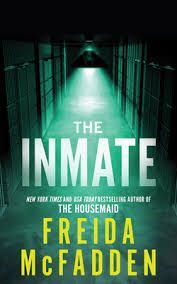Step-by-Step Guide to Crafting a Compelling Story as a Writer

Every novel I’ve written starts with something vague — a whisper of an idea, a line of dialogue, or an image that sticks with me.
I don’t always know where it’s going. I don’t always know what it means. But that’s the fun of it.
I’m not someone who outlines every beat of the story before writing.
I’m what some people call a “pantser” — I write by the seat of my pants.
My only rule? Start with a rough synopsis.
It’s just enough to give me direction without boxing in the characters before they even have a chance to speak.
This is how I go from idea to finished novel, not by plotting every detail but by creating space for the story to unfold as I write.
Why Creativity is My Process
I’ve tried rigid outlines. They kill the joy for me.
I feel like I’ve told the story already — and my excitement to actually write it vanishes.
What works better is jotting down a synopsis first.
It’s loose, flexible, and usually focused on the emotional arc. That gives me enough to spot early plot holes, shape character motivations, and clarify themes.
But once I start writing the first draft? That’s when the real discovery happens.
Characters surprise me. Plot threads appear I didn’t plan. That’s the magic.
1. Catch the Idea Before It Disappears
Some writers wait until the idea is “fully formed.” I don’t.
When a sentence or a question hits me — “What if someone found a letter meant for someone else... 200 years ago?” — I write it down.
My notes app is full of half-baked beginnings.
I never worry if the idea is strong enough. If it sticks with me, it matters.
Tip: Start a document just for these sparks. One day, one of them will demand your attention.
2. Start With an Emotional Hook
Before I know the full plot, I try to understand what emotional truth this story is trying to tell. Is it about grief? Control? Redemption?
That theme becomes my anchor — the one thing I come back to when I get stuck. It doesn’t have to be complicated.
Sometimes it’s as simple as “learning to forgive yourself.”
Tip: If your story had a heartbeat, what would it be feeling?
3. Let Characters Introduce Themselves
When I write my first draft, that’s when I really get to know my characters.
Yes, I’ll sketch a quick backstory or personality note in my synopsis — but I don’t know who they are until I write their voice.
What they say, what they avoid saying, what they notice — that’s how I learn them.
I discover their flaws, fears, and secrets along the way. That’s what makes them feel real to me — and hopefully to readers, too.
Tip: If a character ever feels flat, put them in a new situation and see what they do.
4. Worldbuild as You Go
Even when I’m writing fantasy or historical fiction, I don’t start with a giant map or ten pages of lore.
I create the world as the characters move through it.
I ask: what do they notice about the world? What details matter to them?
Too much early worldbuilding pulls me away from the story.
So I write what’s necessary to ground the scene, and expand it later if the plot demands it.
Tip: Keep a world notes file. Drop facts in as they come up.
5. Use a Loose Synopsis, Not an Outline
Instead of outlining chapter by chapter, I write a synopsis — one to two pages that sketch the main beats and emotional arcs.
It’s not pretty. It’s often full of questions and “maybe this happens?” statements. But it’s flexible. And that’s what I need.
I know where the story starts. I know where I think it might end. Everything in between? I discover it by writing.
Tip: Write your synopsis like you’re pitching the story to a friend.
6. Draft Fast, Edit Later
When I write my first draft, I don’t look back.
I don’t fix typos or check facts or even worry if a scene works. My only job is to keep going.
Some days that means 300 words.
Some days that means 3,000. It doesn’t matter. What matters is staying in the flow.
I write messy, weird, sometimes laughably bad first drafts. And I love them.
Because they exist. And that’s the hardest part.
Tip: Brackets are your best friend: [look up what trees grow in Scotland].
7. Take a Break Before Rewriting
When I finish a draft, I step away. I don’t even think about it for a week or two. Then I come back and read it like it wasn’t mine.
This is when I finally see what’s missing — where the pacing drags, which characters don’t feel consistent, and where I lost the emotional thread.
I never fear cutting. Sometimes entire scenes or subplots go.
I’d rather rewrite a whole chapter than force something that doesn’t work.
Tip: Save your deleted scenes. They often turn into short stories or come back in a future draft.
8. Make Dialogue Pull Its Weight
Dialogue isn’t just talking. It reveals who someone is, how they think, what they want to hide, and what they’re afraid to say.
I read mine out loud. If it sounds too clean, too polished, or too forced — it’s wrong.
And if two characters agree on everything? Boring.
Tip: Try writing a scene only in dialogue, no tags or action. If you can tell who’s who, it works.
9. Ask for Feedback — and Really Listen
By my third draft, I let someone else read it. Usually more than one person. I ask questions like:
● Where did you get bored?
● Was anything confusing?
● Did you care what happened next?
Feedback stings sometimes. But it always makes the story better. I don’t follow every suggestion, but I always listen.
Tip: The second you start defending a scene... you probably know it needs work.
10. Polish Until It Feels Like a Real Book
Once the story works, I zoom in. I smooth transitions.
Cut filler. Rework bad metaphors. Delete “just” and “really” and “suddenly.”
Then I read it out loud. Every. Single. Word. That’s where I catch rhythm problems and accidental repeats.
Sometimes I use editing software. Sometimes I hire a proofreader. But either way, this is the final stretch.
Tip: Change the font before your last read. It tricks your brain into reading with fresh eyes.
Final Thoughts
Writing isn’t a checklist — it’s a relationship.
Sometimes it’s effortless. Sometimes it’s infuriating. But when it clicks? There’s nothing better.
You don’t need to be a plotter or a perfectionist. You just need to start.
Trust your instincts. Trust the mess. And let the story grow alongside you.

The body content of your post goes here. To edit this text, click on it and delete this default text and start typing your own or paste your own from a different source.





